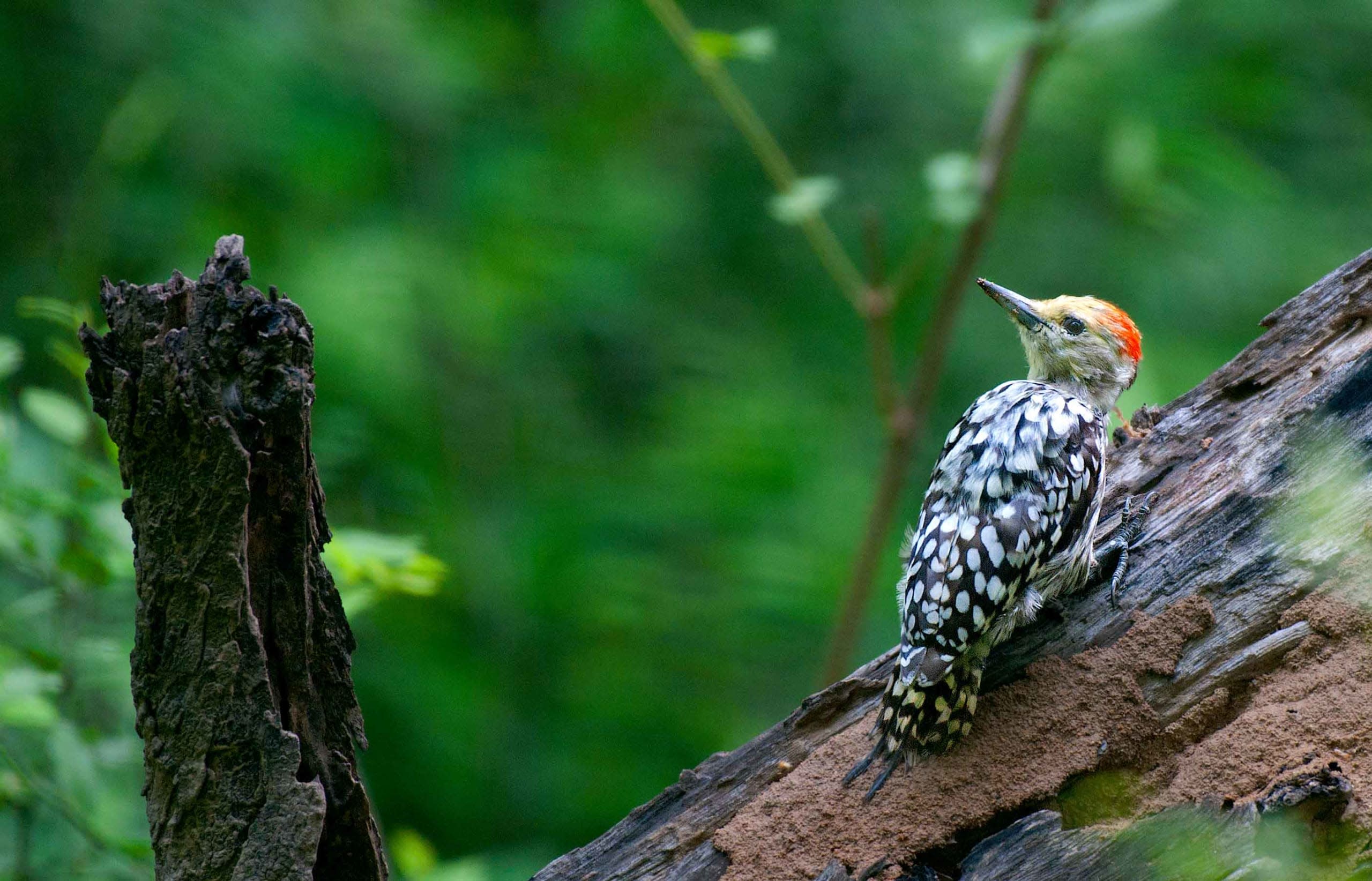 Listen to this article
•
15:34 min
Listen to this article
•
15:34 min
It is a cold December morning. A light fog envelops me while I stand among young trees and shrubs in the middle of Aravalli Biodiversity Park in Gurgaon. I pick my phone up, start a timer, and hit the record button.
For the next five minutes, I note every bird I see. To my surprise, a sirkeer malkoha (Taccocua leschenaultia) is sitting atop a babul tree (Vachellia nilotica), an uncommon but quintessential bird of the National Capital Region’s (NCR) scrub forests. It’s a beautiful bird with dramatic eyes and a red bill that stands out against its pale brown body. I rejoice, but only for a moment; I need to resume counting. The bird stays with me to the end of my count. Lovingly, I say goodbye and move forward.
Documenting birds in the NCR’s Aravallis has given me innumerable instances of joy. Watching the forests over the years has attuned me to their rhythm. It’s a rhythm reflected in the dynamic bird communities, who, with each season, bring something new to behold.

Cover Photo: The striking yellow-crowned woodpecker (Leiopicus mahrattensis) inhabits the woodlands of the NCR. Photo: Abhishek Gulshan
Winter Wanderers
In the winter, these forests are brown and seem very still, but a rich, thriving birdlife exists if you look closely. One of the most common winter visitors is the lesser whitethroat (Curruca curruca), moving among the acacia trees. A lone black redstart (Phoenicurus ochruros) might flutter in the understorey, vibrating its tail — the reason it is aptly named “thirthira” in Hindi.
Move into open scrub, and you might find a Eurasian wryneck (Jynx torquilla) skulking inside a bush or a white-capped bunting (Emberiza stewarti) perched on a shrub. Among raptors, you might catch the steppe eagle, booted eagle or the Eurasian kestrel.
Besides visitors, the open habitats harbour residents like the Indian robin, laughing dove, flocks of common babblers, yellow-eyed babblers and white-eared bulbuls. Marshal’s iora (Aegithina nigrolutea), a bird that has a strong association with scrub forests, is a rarity, but one can spot it in a village called Kot, near Mangar. In grasslands, I sometimes see a black-shouldered kite (Elanus caeruleus) hovering mid-air, locking eyes on its prey scurrying somewhere inside the dry grasses.
Other residents, like small minivets, chestnut-shouldered petronias, common woodshrikes, plum-headed parakeets, yellow-crowned woodpeckers, and white-browed fantails prefer relatively more wooded habitats. Rarer birds, like the white-bellied drongo and cinereous tit can be seen with relative ease in some forests of the southern ridge.
The Changing Seasons
Once winter is gone, March-April is the time of transition and a lot of plants drop their leaves and start to flower. The forests come alive with flowers of ker (Capparis decidua) and dhak (Butea monosperma).
Winter birds start trickling out, and the residents prepare to breed. My all-time favorite highlight from this season is listening to a bay-backed shrike (Lanius vittatus) mimicking the calls of six different birds, perhaps to impress its mate — all within a minute!
As the breeding visitors join the residents, you know that summer is here and it’s time to savour the bright yellow of the Indian golden oriole (Oriolus kundoo) and the ribbon-like streamers of the Indian paradise flycatcher (Terpsiphone paradisi). Blue-tailed and blue-cheeked bee-eaters excavate cavities along crumbling mud walls or sandhills to nest.

The onset of monsoon coincides with the arrival of the pied cuckoo, and the forests become lush green, overflowing with a melange of sounds. Jungle prinias sing while perched atop small trees or bushes in some open scrublands. Along with the resident Asian koels and common-hawk cuckoos, the visiting grey-bellied and common cuckoos fill the air with their unique songs. This is also the time to see savanna and long-tailed nightjars in some birding hotspots, albeit with a little hard work.
I once visited Mangar Bani, a preserved native Aravalli forest in Faridabad, towards the end of August. I was a little perplexed to hear the entire forest resonate with the songs of an unknown warbler species. These songs were nothing like anything I had heard before. I later found out that these were greenish warblers (Phylloscopus trochiloides), arriving from temperate forests up north. I had caught them during the brief period where both the males and females sing to establish territories. These songs are different from the usual short calls I hear in the NCR in winter. Some individuals stay back in the area while others head to the peninsula to spend the winter. As the monsoon recedes, I catch a glimpse of such passage migrants who make a pitstop in the NCR before moving to their wintering grounds.











